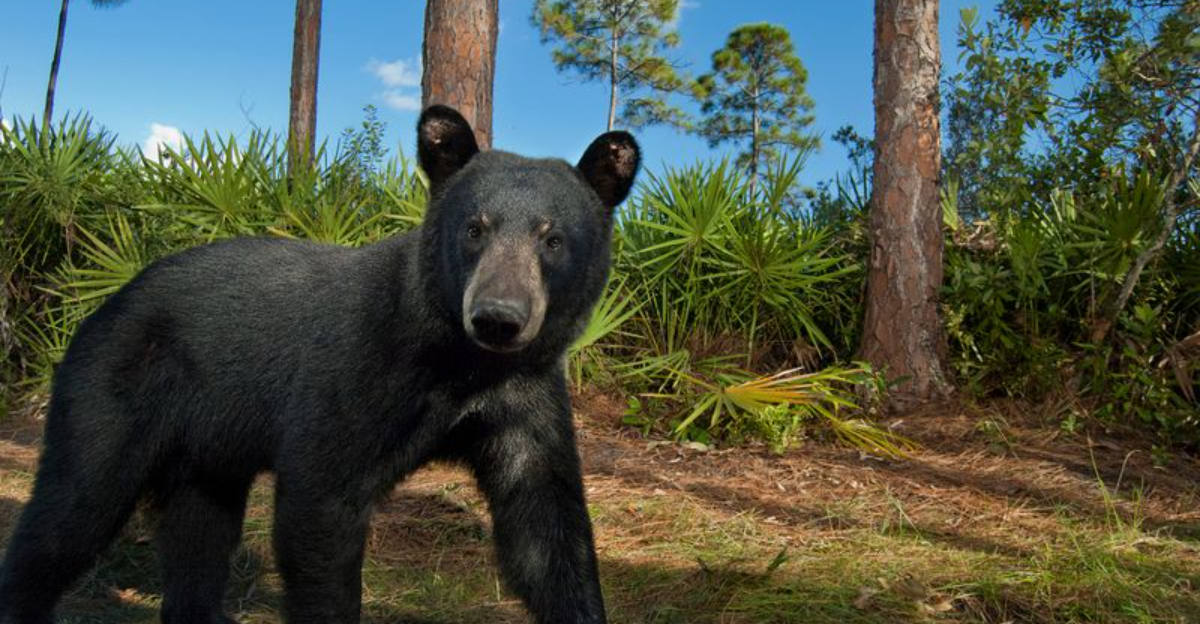Florida’s stunning beaches and untamed wilderness are more than just postcard-perfect—they’re also home to some of the most dangerous creatures in the United States.
Having explored the Sunshine State extensively, I’ve come face-to-face with wildlife that can be both awe-inspiring and hazardous. From venomous snakes and aggressive alligators to stinging jellyfish and stealthy panthers, Florida’s natural beauty hides real threats.
Whether you’re visiting on vacation or calling the state home, understanding which animals to avoid is crucial for your safety. Let me share my hard-earned insights into Florida’s most dangerous wildlife—and exactly where you’re likely to run into them.
1. Alligators: Rulers of the Waterways
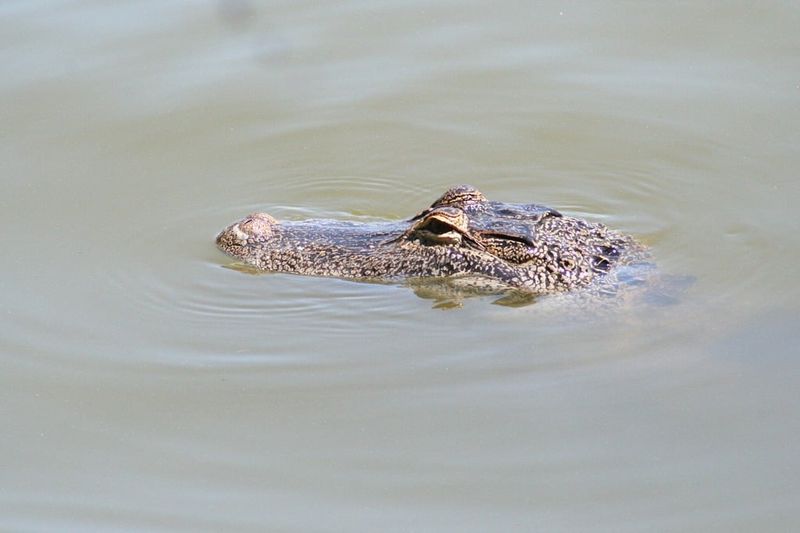
Whoa, these prehistoric-looking chompers give me the heebie-jeebies every time! Last summer, I spotted a massive gator sunning itself just feet from a popular hiking trail near Gainesville. Talk about a heart-stopping moment!
Alligators inhabit virtually all Florida freshwater bodies—lakes, rivers, swamps, and sometimes even swimming pools! They’re especially active during dawn and dusk. Females guarding nests between June and July can be particularly aggressive.
Stay at least 30 feet away from any gator you spot. Never feed them (it’s illegal anyway), and keep pets on leashes near water. Remember: any freshwater area in Florida could potentially house these powerful reptiles.
2. Eastern Diamondback Rattlesnakes: Desert Diamonds
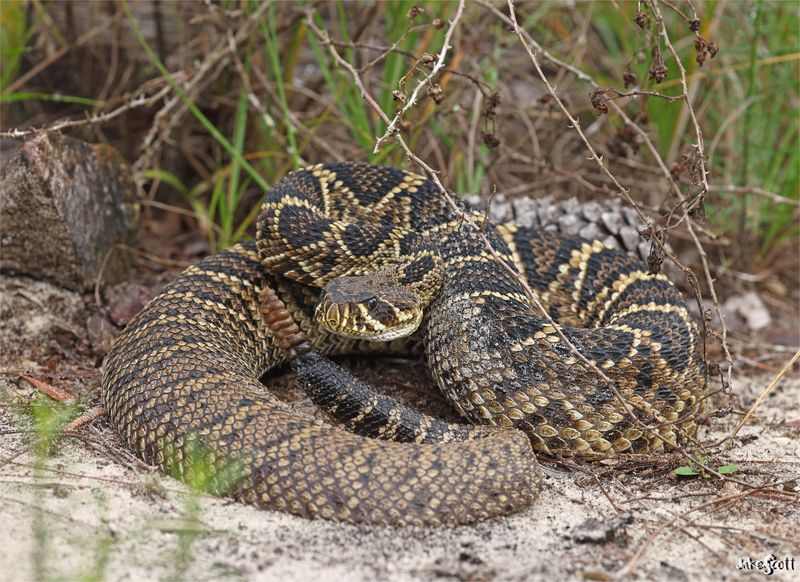
Yikes! I nearly stepped on one of these camouflage masters while hiking in Ocala National Forest. That distinctive rattle sound sent me jumping backward faster than I knew I could move!
These venomous snakes are the largest rattlesnake species in North America and pack a seriously potent bite. They prefer dry pine flatwoods, palmetto thickets, and scrubby areas throughout Florida, especially in rural regions.
Watch your step when hiking and always stick to cleared paths. Wear closed-toe shoes and long pants when exploring natural areas. If you hear that warning rattle, freeze momentarily to locate the snake, then slowly back away. Never try to handle or provoke these impressive but dangerous reptiles.
3. Bull Sharks: The Shallow Water Surprise
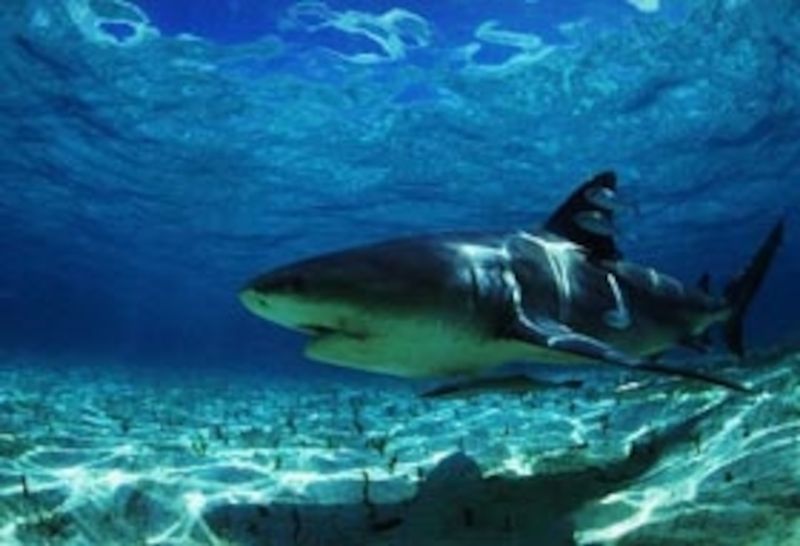
Holy mackerel! During a beach day in Sarasota, lifeguards suddenly cleared everyone from the water after spotting a bull shark cruising surprisingly close to shore. My beach picnic suddenly had a much more exciting view!
Unlike other shark species, bull sharks can tolerate freshwater and often swim up rivers and into brackish waterways. They frequently visit coastal areas, estuaries, and even miles upriver in places like the St. Johns River system.
Avoid swimming at dawn, dusk, or night when sharks feed most actively. Stay away from fishing areas where bait might attract them. Don’t wear shiny jewelry in the water—it resembles fish scales. If you spot a shark, calmly (but quickly!) make your way back to shore without splashing excessively.
4. Florida Black Bears: Forest Giants
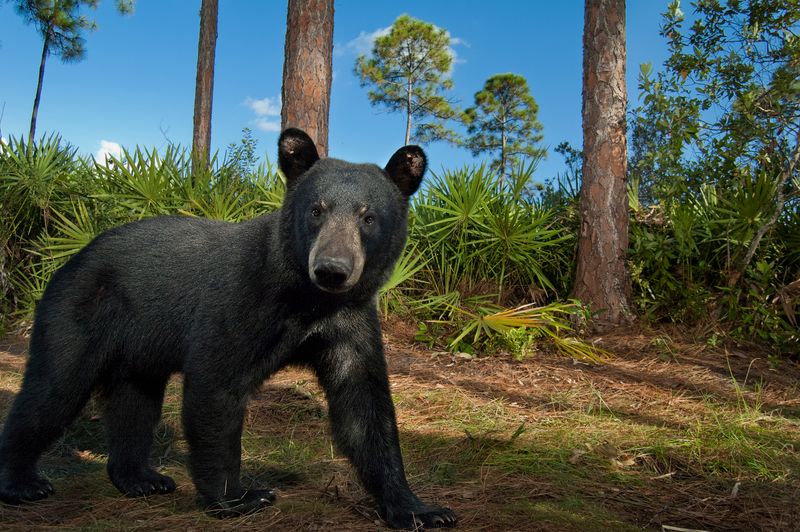
Mama mia! My camping trip in Ocala National Forest got super interesting when I spotted massive paw prints near my tent one morning. The park ranger later confirmed a Florida black bear had been checking out our campsite!
These magnificent mammals primarily inhabit the forested areas of North Florida, including Ocala National Forest, Apalachicola National Forest, and Big Cypress National Preserve. While not typically aggressive, they can become dangerous if startled or if protecting cubs.
Store food properly when camping—use bear-resistant containers or hang food at least 10 feet high. Make noise while hiking to avoid surprising bears. If you encounter one, speak calmly while backing away slowly. Never run, as this can trigger a chase response from these surprisingly speedy creatures.
5. Portuguese Man-o-War: Floating Purple Pain
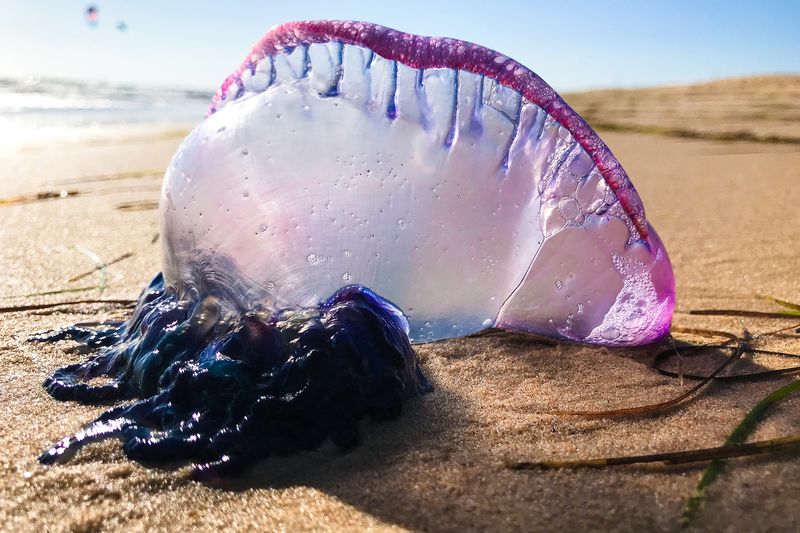
Ouch! These gelatinous meanies left quite an impression on my beach vacation in Key West. What looked like a pretty purple balloon floating in the surf turned out to be nature’s own stinging machine!
Though not technically jellyfish but colonial organisms, Portuguese Man-o-Wars wash up on Florida beaches primarily during winter months when strong winds blow them ashore. Their tentacles can extend up to 30 feet and deliver extremely painful stings.
Look for purple flag warnings at beaches, which indicate dangerous marine life. Even specimens washed ashore can sting, so never touch them. If stung, rinse with vinegar (not fresh water, which worsens the sting), remove tentacles with a stick or tweezers, and seek medical attention for severe reactions.
6. Cottonmouths: Swamp Serpents with an Attitude
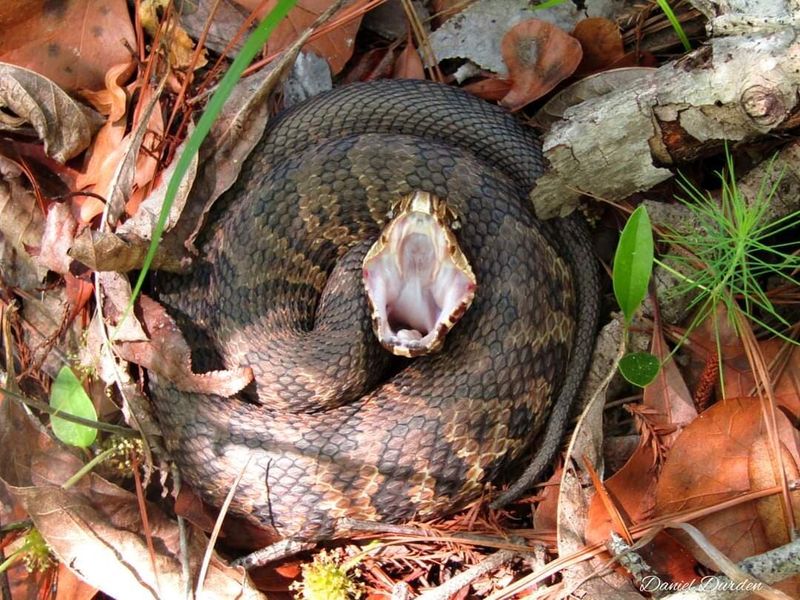
Goodness gracious! While kayaking through the Everglades, I watched a cottonmouth do that signature mouth-gaping display from a cypress knee. Even from a safe distance, those white-lined jaws gave me serious chills!
Also known as water moccasins, these venomous snakes inhabit freshwater marshes, swamps, lake edges, and streams throughout Florida. Unlike many snakes that retreat when threatened, cottonmouths often stand their ground and display their white mouth lining as a warning.
Watch where you step near water edges and wear protective footwear in swampy areas. Keep hands and feet out of vegetation you can’t clearly see. If kayaking, avoid brushing against overhanging branches where these snakes sometimes rest. They’re particularly common in central and northern Florida wetlands.
7. Wild Boars: Tusked Troublemakers
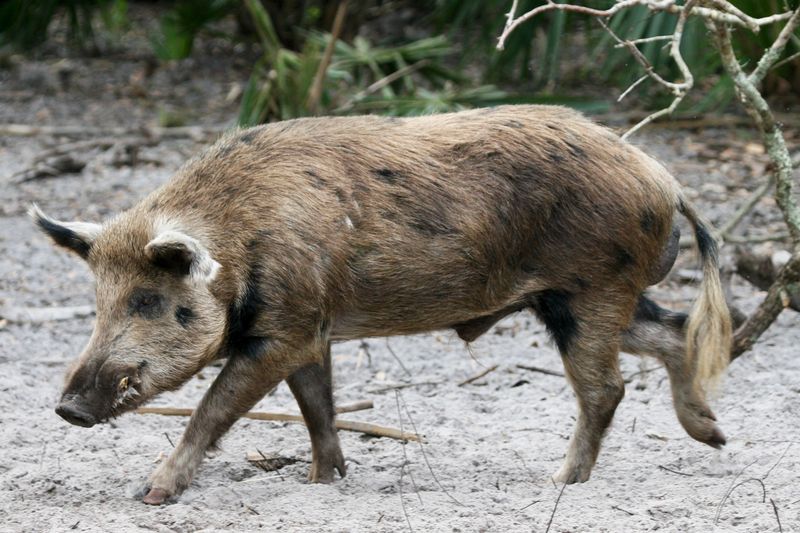
Sweet potato pie! My peaceful nature walk through Myakka River State Park turned into an impromptu sprint when I rounded a bend and surprised a group of wild boars. Those tusks and grunts sent a clear message: this was their territory!
These non-native invaders thrive throughout Florida, especially in rural areas with dense vegetation like Ocala National Forest, Green Swamp, and various wildlife management areas. Though they typically avoid humans, females with piglets can be extremely protective and dangerous.
Make noise while hiking to avoid surprising them. If you encounter wild boars, slowly back away and put solid objects between you and them. Never approach piglets, as mama is certainly nearby and won’t appreciate your interest. They’re most active at dawn and dusk.
8. Fire Ants: Tiny Terrors with Fiery Bites
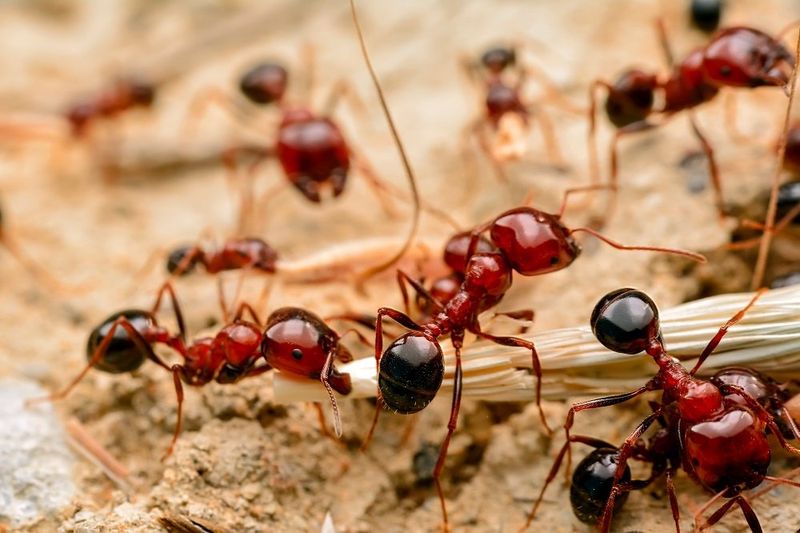
Jumpin’ jehoshaphat! My first Florida picnic became memorable for all the wrong reasons when I unknowingly set my blanket on a fire ant mound. Those little red demons swarmed up my legs faster than I could say “sweet tea”!
These aggressive insects build distinctive mounded nests throughout Florida, particularly in sunny, open areas like lawns, parks, playgrounds, and agricultural fields. When disturbed, they attack en masse, delivering painful stings that often develop into pustules.
Always check the ground before sitting in grassy areas. Wear closed shoes and socks in infested areas. If attacked, brush ants off quickly rather than smashing them (which can trigger more stinging). For those with allergies, reactions can be serious—carry appropriate medication if you’re sensitive.
9. American Crocodiles: The Southern Specialists

Holy guacamole! Spotting one of these rare reptiles during my Everglades boat tour left me completely starstruck. The guide explained how lucky we were to see America’s only native crocodile species!
Unlike their more common alligator cousins, American crocodiles inhabit strictly southern Florida, primarily in coastal areas of the Everglades, Florida Bay, and the Florida Keys. They prefer saltwater and brackish environments, though they occasionally venture into freshwater.
While typically more shy than alligators, crocodiles deserve extreme respect. Keep a safe distance when boating in their territory. Never swim in areas marked as crocodile habitat. Dawn and dusk are their most active feeding times, so be especially cautious then.
10. Box Jellyfish: Transparent Threats
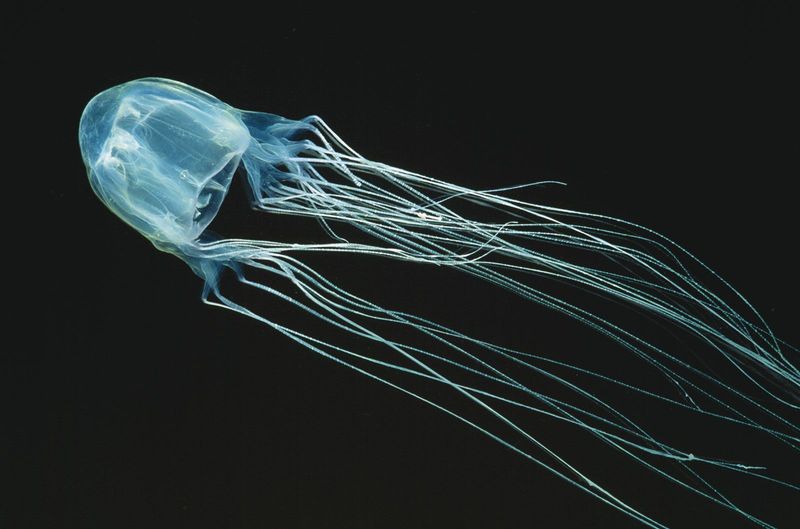
Great googly moogly! During my snorkeling adventure in the Keys, our guide suddenly ushered everyone back onto the boat after spotting one of these nearly invisible menaces drifting nearby. Talk about a hidden danger!
Several species of box jellyfish inhabit Florida waters, particularly in the Keys and along the Gulf Coast. Their transparent bodies make them difficult to spot, and their venom can cause intense pain, respiratory problems, and in rare cases, cardiac complications.
Check beach warning flags before swimming—purple flags indicate dangerous marine life. Wear protective clothing like rash guards when snorkeling. Avoid swimming during jellyfish season (typically August through October). If stung, rinse with vinegar, remove tentacles with tweezers, and seek medical help immediately. They’re most common in the Florida Keys and southern Gulf Coast.
